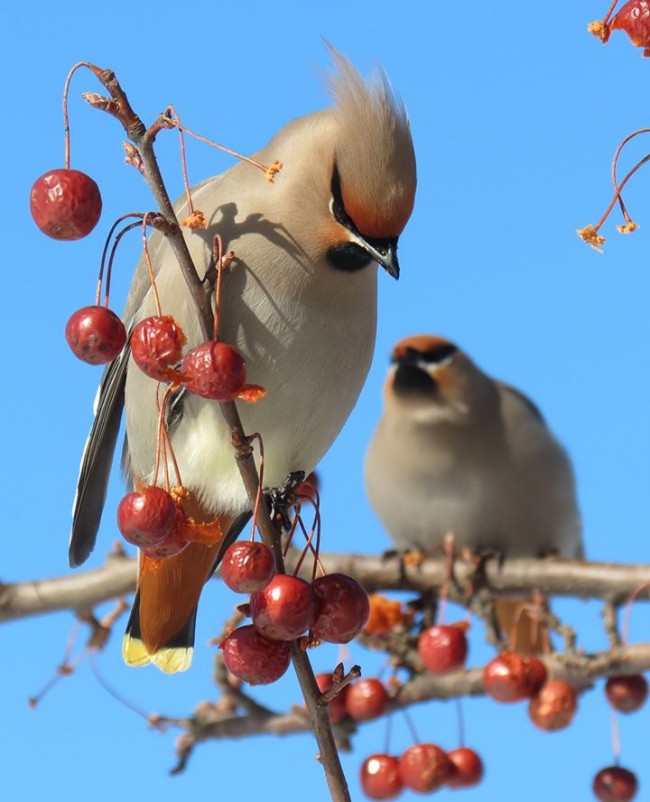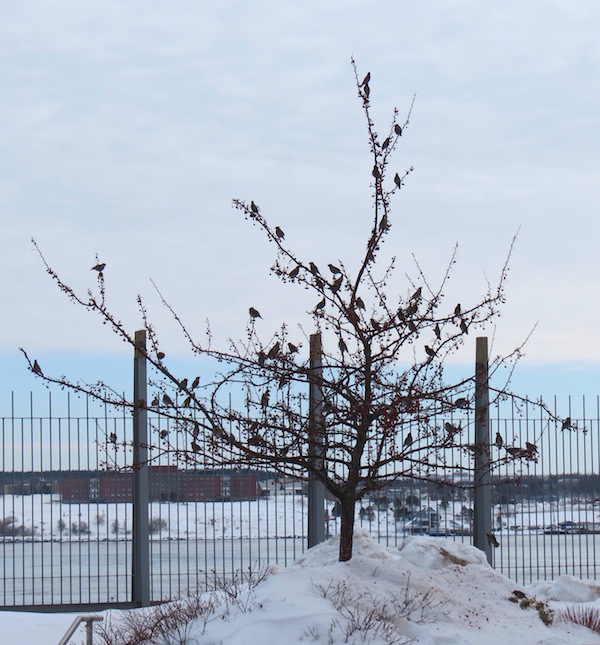22 Mar Bohemian Rhapsody — updated
While bellicose Haligonians spent the week fulminating over the failure of municipal politicians to make six inches of ice and three feet of snow disappear instantaneously, a flock of Bohemian waxwings settled in to feed on an unobtrusive flowering crabapple bush on the Halifax waterfront. Joshua Barss Donham captured these images Friday:


By Saturday, when Joshua took the photos below, the flock had grown to more than 70 birds.


The Bohemian waxwing is a starling-sized visitor that breeds far to the north and west, in northern Canada and Alaska, also in northern Eurasia. Sightings in Nova Scotia—almost always in late fall or winter—are sufficiently infrequent to mark the highlight of a birder’s day. We are at the southeastern fringe of its North American winter range.
A slightly smaller cousin, the cedar waxwing, regularly breeds throughout province, and may be found year-round in southwestern counties.
Distinguishing the two is tricky: apart from size and season, the cedar has a yellow wash across the belly but is white under tail. The Bohemian has a grey belly and is rufous under tail. The Bohemian also sports a rufous flare on the forehead and under the eyes, which the cedar lacks.
A good reason to plant crabapples.
UPDATE: When it comes to Bohemian waxwings, “invasion” seems to be a relative term. A South Shore reader who discovered a flock of 40 Bohemians in her yard this week was inspired to check out the Wikipedia entry:
In some years, this waxwing irrupts south of its normal wintering areas, sometimes in huge numbers. The fruit on which the birds depend in winter varies in abundance from year to year, and in poor years, particularly those following a good crop the previous year, the flocks move farther south until they reach adequate supplies.They will stay until the food runs out and move on again.In what may be the largest ever irruption in Europe, in the winter of 2004–2005, more than half a million waxwings were recorded in Germany alone. This invasion followed an unusually warm, dry breeding season.In 1908, an American flock 60–90 m (200–300 ft) wide was noted as taking two to three minutes to fly over.
In case you’re wondering, as I was, “irrupt” is the apt verb. You could look it up.
